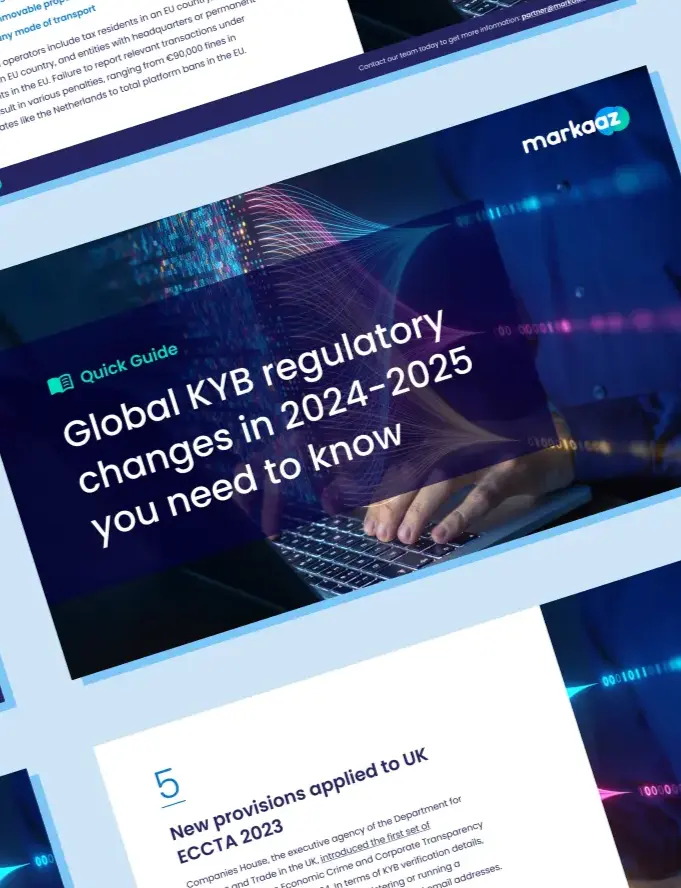
The consequences for failing to meet anti-money laundering (AML) monitoring requirements can be severe. In June 2020, the payments company Wirecard reported missing nearly $2 billion from its accounts. The investigation resulted in fines of $2.8 million for AML security breaches and jail sentences to associated individuals.
While this may seem extreme, even small businesses can face potentially devastating fines. FINRA’s 2024 Sanctions Guidelines state that small firms can be fined $10,000 to $310,000 for AML compliance failures, while sanctions for mid-sized to large firms start at $20,000 and have no upper limit.
To avoid unintentional noncompliance, businesses must understand the fundamentals of money laundering and stay informed of the latest AML regulatory developments. By combining this knowledge with advanced technology, firms of all sizes can build a robust AML compliance solution. Here’s what you need to know.
The basics of money laundering
Money laundering is the process of making illegally gained profits appear legal. This is typically carried out in three key stages: placement, layering, and integration.
Placement
In the placement stage, launderers introduce their illicit gains into the financial system. This is often done by spreading large deposits across accounts to make them less suspicious. Other methods include purchasing high-value items like luxury cars or jewelry, or funneling money through cash-intensive businesses where large cash transactions are less likely to draw attention.
Layering
Layering involves moving money around to create confusion and distance it from its illegal source. It’s commonly done through complex financial maneuvers such as transferring money across international borders, investing in financial products with minimal transparency, or purchasing and selling assets through a web of companies.
Integration
In the integration stage, the laundered money re-enters the economy, appearing as legitimate income. The now-clean funds are typically invested in legitimate businesses, used for real estate transactions, or used to acquire other significant assets. Launderers might also return the money to the criminal enterprise from which it originated, under the guise of legitimate earnings from investments or business activities.
What is AML compliance?
At its core, AML compliance is a set of laws, regulations, and procedures designed to detect money laundering activities. Financial institutions and other regulated entities must have AML programs in place to detect and report suspicious activities, such as large cash transactions or transfers to high-risk countries.
The global AML regulatory landscape includes several key components, including:
- Financial Action Task Force (FATF): An intergovernmental organization that sets international standards for combating money laundering and terrorist financing.
- European Union AML Directives: A set of laws that member states must implement to prevent money laundering and terrorist financing within the EU.
- Bank Secrecy Act (BSA): A U.S. law requiring financial institutions to assist government agencies in detecting and preventing money laundering.
- USA PATRIOT Act: A U.S. law that expanded the BSA and introduced new AML requirements, such as enhanced customer identification and reporting of suspicious activities.
- Office of Foreign Assets Control (OFAC): A U.S. Treasury Department agency that enforces economic sanctions against targeted foreign countries, terrorists, and other threats to national security.
AML compliance is constantly evolving to keep up with the latest money laundering techniques and newly uncovered vulnerabilities. For example, the Beneficial Ownership Information Reporting rule, which went into effect on January 1, 2024, aims to increase transparency regarding business ownership and control.
The recently proposed Anti-Money Laundering Regulations for Residential Real Estate Transfers rule would mandate reporting for certain all-cash real estate transactions that are susceptible to money laundering. Other advances are also on the horizon, including an increased focus on cross-border information sharing and proposed regulations to address the rise in cryptocurrency transactions. These changes underscore the importance of continually updating AML compliance programs.
Building a robust AML compliance program
A well-designed AML compliance program is the key to ensuring your company can detect, respond to, and eliminate risks associated with money laundering, terrorist financing, and other forms of fraud. To ensure compliance, businesses must complete the following five steps:
1. Appoint a compliance officer
Appoint a dedicated Compliance Officer responsible for overseeing and implementing your AML compliance program. This person should have a deep understanding of AML regulations and the authority to enforce compliance measures across your organization.
2. Develop policies, procedures, and control
Develop clear policies and procedures that align with AML regulatory requirements. Incorporate AML compliance software to automate and streamline your processes, enhancing the efficiency of ongoing monitoring and control.
3. Conduct risk assessments
Conduct regular risk assessments to identify potential vulnerabilities within your business operations. Utilize business verification solutions to accurately assess the risk profile of customers and transactions.
4. Establish training programs
Effective training programs are essential for ensuring each employee understands their role in AML compliance. These should cover the fundamentals of AML regulations, your business’s specific policies and procedures, and how to recognize and handle potential money laundering activities. Regular updates and refresher courses will keep staff up to date on the latest compliance standards and practices.
5. Perform independent reviews and assessments
Schedule periodic independent reviews to evaluate the effectiveness of your AML compliance program. These assessments can help identify areas for improvement and ensure your program adapts to new regulations and emerging risks.
Leveraging technology in AML compliance
In the past, AML compliance required time-consuming, labor-intensive manual practices. The exhaustive verification procedures and extensive paperwork demanded significant time and effort and were prone to human error. Manual methods also struggled to keep up with evolving money laundering techniques.
Today, most modern compliance programs are built on advanced technology platforms. AML compliance software allows for ongoing AML monitoring, real-time threat detection, and advanced business verification services. This new technology improves accuracy and efficiency while minimizing incidents of false-positive detection.
Markaaz offers industry-leading AML compliance solutions, including daily checks against global sanctions and law enforcement lists. Our Markaaz Directory of over 300 million global business records and rapid matching algorithms mean you can get results in a matter of seconds. Real-time alerts keep you informed around the clock, ensuring your business is ready to take proactive action the moment a threat arises, placing you in the best possible position to avoid fraud risks and stay ahead of the compliance curve.
Explore Markaaz’s advanced AML solutions
For many business owners, keeping up with anti-money laundering regulations is more than a legal necessity—it’s a critical part of operations. In addition to avoiding significant fines, proper AML compliance protects your reputation and helps safeguard the global financial system.
In today’s complex regulatory environment, regulated businesses of all sizes need a comprehensive AML compliance program. Business owners must understand the fundamentals of money laundering and stay informed of the latest regulatory developments. Markaaz’s solutions will help you develop a robust, efficient AML compliance program that’s always up to date.
Learn how ongoing monitoring, advanced algorithms, and enhanced sanctions screening can safeguard your business. Schedule a personalized demo with Markaaz today.



